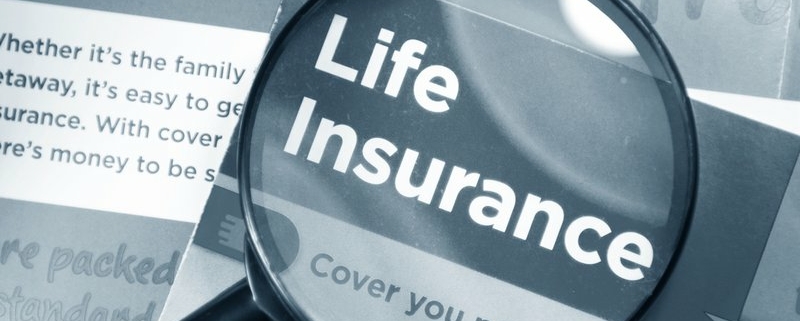The Case for Life Insurance
When it comes to most forms of insurance, many people understand the importance of having coverage. Whether it’s your car, your home, or other valuable possessions, having insurance means that you’re financially protected should disaster strike. One of the first things you do when you buy a new car is to make sure it is protected before you drive it off the lot. Why? Because if you are involved in an accident chances are good you would suffer financially.
But, what about life insurance?
Although this form of protection works the same way as all other types of insurance, many are reluctant to open the conversation. Perhaps one reason is that life insurance involves the planning for the worst-case scenario – your death. The truth remains however, that if someone, your family or your business for example, would suffer a financial loss due to your death, life insurance is the answer. In fact, life insurance is one of the smartest ways to provide for both yourself and your loved ones.
For today, take stock of your current situation and consider these important reasons why life insurance is needed:
Protect your future insurability
Even if you are just starting out, perhaps single, with no immediate dependents, life insurance should still be considered. If your future includes having a family and all the obligations that go with that then your continuing insurability is important. Selecting an insurance plan now that guarantees your ability to purchase more coverage in the future regardless of your insurability will go a long way in protecting your future family. For young people, the cost of life insurance is minimal and could also provide a long-term saving plan growing tax-free that could be utilized later.
Insure your debts
Unfortunately, debt is a natural part of modern life for most Canadians. The Bank of Canada reports that for every $1 of income earned by Canadians, $1.70 is owed. So, chances are good that you have significant debt, whether it’s tied to credit cards, a car payment, or a mortgage. Ideally, you’ll be able to pay off these debts long before you die. However, should the worst happen, much of that debt will pass to your loved ones.
If you don’t want to burden your family with debt, having a life insurance policy is a wise choice. Not only can the death benefit cover any debt you already owe, but it can help alleviate additional costs, such as funeral expenses.
Provide for your family
If you are married and/or have children, then you owe it to your family to have life insurance. This is especially true if you are the primary breadwinner in the household. Although most people don’t want to think about what may happen if they pass on at a relatively young age, the fact is that you need to make sure that your family is still looked after financially if that does occur. A life insurance policy can offer peace of mind, knowing that your spouse and children will be provided for no matter what.
Benefit from the tax advantages
If you want a more pragmatic reason for getting life insurance, what about the fact that the death benefit is tax-free? This fact is the reason why life insurance is used to provide estate liquidity in paying taxes that become payable as a consequence of death. In addition, there are several ways that you can make your policy a haven for any funds that you don’t want exposed to income tax.
If you invest in permanent, cash value life insurance such as Universal Life or Participating Whole Life, the investment growth in the policy is tax-free should you die. The cash value may also be accessed while you are living.
Transfer assets to children and grandchildren
Establishing cash value policies for your children and grandchildren is a recognized method of both guaranteeing their insurance future while you control the investment portion which is growing tax-free on their behalf. When the time is right for you to transfer the policy to them, the change of ownership occurs free of income tax. This is truly a tax-free intergenerational wealth transfer.
Save for retirement
Although life insurance is typically paid out when you die, there are options to take advantage of the money in your policy while you’re still alive. If you have exhausted other retirement vehicles (e.g. RSP’s, TFSA’s), investing in a Universal Life or Participating Whole Life policy is a method to augment your retirement savings. Universal Life policies will perform based on the equity or other asset class investment options you select. Participating Whole Life policies provide stable, increasing returns which are favourable compared to the risk.
Using cash value life insurance for building wealth to be accessed in the future, is a strategy consistent with proper diversification of assets. The fact that the investment growth in a life insurance policy is tax-advantaged is a definite bonus.
To protect your business
If you own or operate a business, you most likely are aware of the corporate need for life insurance. All significant corporate debt should be insured. In fact, many lenders will insist upon it. Just like all machinery and fixed assets of a business are insured, so should the key people who contribute to the profits be life insured as well. If the company or partnership has a Shareholders or Partnership Agreement, they should be funded with life insurance to provide for the transfer of shares or partnership interest from the beneficiaries of the deceased to the firm.
Using cash value life insurance in a private corporation avoids the punitive tax levied against any passive investments in the corporation which, depending on the province, could be higher than 50%. Tax-free benefits can be paid out of the corporation upon the death of the insured for the benefit of the surviving shareholders or family.
Remember that in addition to you and your family, there may be employees who are dependent on the continued success of your company for their livelihood. Life insurance owned by the business goes a long way to guarantee this.
To equalize your estate
If your estate includes shares in a business that you may have designated one of your children to inherit in lieu of another child, consider equalizing the bequests by life insurance. Another example of where life insurance could be used for estate equalization is leaving your primary residence or other real estate (such as a cottage) to a specific child instead of one or more of his or her siblings. If the other assets being left are not enough to compensate, life insurance should be considered.
To donate to charity
You can provide significantly for your favourite charity using life insurance. Whether it be by taking out a policy to benefit the charity, by transferring an existing policy you no longer need to a charity, or by just naming the charity as a beneficiary to a life insurance policy prior to your death, you or your estate will benefit from significant tax credits. Your legacy will be remembered by the fact that your generous act contributed to the charity’s humanitarian endeavors.
Consider how life insurance can fit into your financial plan
Even though some people have a reluctance to think about life insurance, no matter how you look at it, life insurance is a necessary part of modern life. Without it, you could be condemning your family to financial instability. Whether it’s debt, last expenses, guaranteeing your children’s education, providing for income for your family, protecting your business, or tax and estate planning, life insurance provides tax-free dollars when it will be needed the most. You buy life insurance, not for what it is, but what it does.
Copyright @ 2023 FSB Content Marketing – All Rights Reserved









